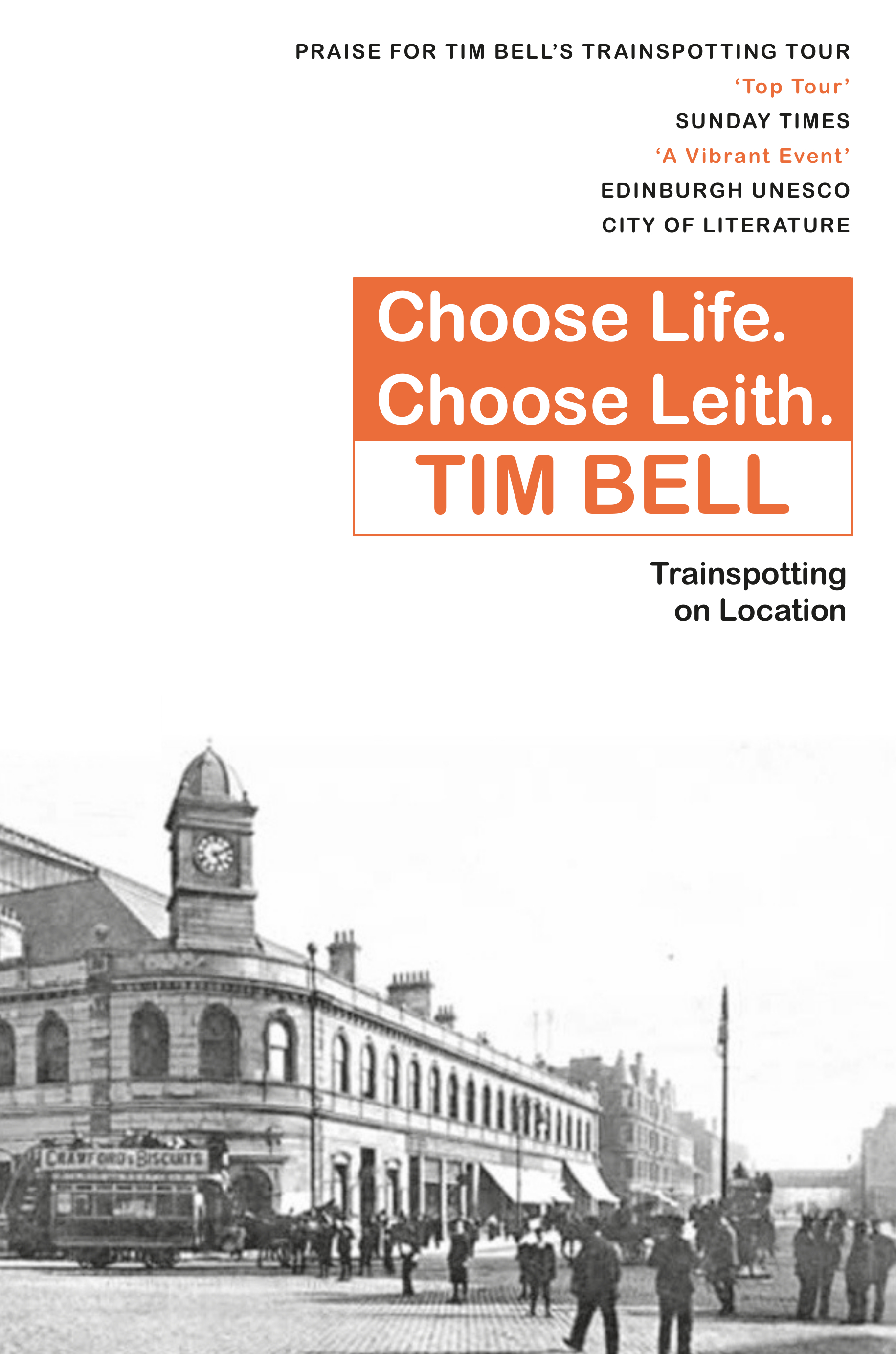From Chapter 18: Influences, Context and Genre
When I first read Trainspotting, here in Leith, I was bowled along by the pace, the cheek, the colour, the freshness of the voices, the authenticity, and, of course, it was fun to recognise so many familiar locations set in fiction. ‘Nice try, Mr Welsh’ I thought. ‘But it’s too topical and it’s too local. It won’t last and it won’t travel.’
Welsh has said that Trainspotting is ‘all about generation and geography’. This isn’t new. In 1621 Peter Heylyn wrote ‘…History without Geography, like a dead carkasse, hath neither life nor motion at all…’ One of the steps in the formation of modern Scotland was the making of maps, which realigned peoples’ self-identification from loyalty to clan, or king, or church, to their place in the topography: on the coast, or by a river, or up a glen. The daily preoccupations of a sheep farmer’s lad are necessarily different from those of his contemporary in a declining port town. Identity and culture are acted out – history is made – on location. Some literary pundits will have it that in Trainspotting location has a presence like a character. I prefer to think of it as a literary form of cartography.
From the beginning, Trainspotting was described as a novel without any attempt to mark out what makes it different from an anthology of short stories. To be sure, the stories have themes and characters in common, and they make some sort of progress towards an ending, which means they become also episodes; but a novel needs to be more than one thing after another. There needs to be artful clues, themes, plots, surprises, structures, which the reader discovers and unravels along the way.
Richard Pevear wrote this in the introduction to his translation of War and Peace, which has always been called a novel:
The first readers of War and Peace were certainly surprised, but often also bewildered and dismayed by the book. They found it hard to identify the main characters, to discover anything like a plot, to see any connection between episodes, to understand the sudden leaps from fiction to history, from narration to philosophising. There seemed to be no focus, no artistic unity to the work, no real beginning and no real resolution…40
A quarter-century after Irvine Welsh burst onto the literary scene I could write exactly this about Trainspotting. Pevear goes on:
The formal structure of War and Peace and the texture of its prose are indeed strange. Those who did not simply declare the book a failure, dismissing the newness […] of what Tolstoy was doing as artistic helplessness and naïveté, often said that it succeeded in spite of its artistic flaws. But that is a false distinction. War and Peace is a work of art, and if it succeeds, it cannot be in spite of its formal deficiencies, but only because Tolstoy created a new form that was adequate to his vision.41
I couldn’t have put it better myself if I was referring to Trainspotting and Welsh. Trainspotting is Welsh’s best effort to convey his vision, to tell a truth. Don’t wait for ‘the truth’ to be made apparent and laid before you. No sooner do you establish a truth than you and it move on. Truth is held in tension. Slippery stuff, truth. We could say that Trainspotting, written during and in the immediate aftermath of the period in which it is set (in contrast to War and Peace which was written within living memory of the period in which it is set but well after formal histories had been assembled), is a form of journalism, the first draft of history. They tell journalists not to file a story until they have been close enough to smell it. Welsh smelled the action of which he wrote. Look on it as a first draft of history, in fictionalised form. Dr Roy Robertson, GP in Muirhouse and in the forefront of dealing with the collision of heroin and HIV, is quoted as saying ‘I think we owe Irvine Welsh a great debt because he brought it out in the open. He definitely humanised drug users.’42
In 2017 Jon Snow led a collective mea culpa on behalf of journalism for failing to tell the real story of what was happening in the wealthy London Borough of Kensington and Chelsea before the ghastly fire in Grenfell Tower in June of that year which killed so many unwealthy people. It can be said that Welsh told the true story of what was happening in Muirhouse (not so much in Trainspotting as in other fiction, as outlined in Section III, 4: Meanwhile in the schemes). I was very struck, talking to someone who lived and worked with children in Muirhouse, that, having read Marabou Stork Nightmares he identified strongly with the line: ‘In Muirhoose nae cunt can hear you scream… well, they can hear ye, they just dinnae gie a fuck’(MSN, p.141). This was after I had selected it for inclusion in my chapter ‘Meanwhile in the schemes’. When Welsh wrote: ‘All those dull broadsheet newspaper articles on the scheme where we lived tended to focus on how deprived it was. Maybe it was, but I’d always defined the place as less characterised by poverty than by boredom, although the relationship between the two is pretty evident’ (MSN, p19) he was ahead of the academics who much later established a strong link between too much time and little purpose in life with heroin abuse.43 This is journalism, buried in fiction; but nobody read it in the next day’s newspapers, and since it didn’t appear for as long as it takes for fiction to appear, maybe it is history.

